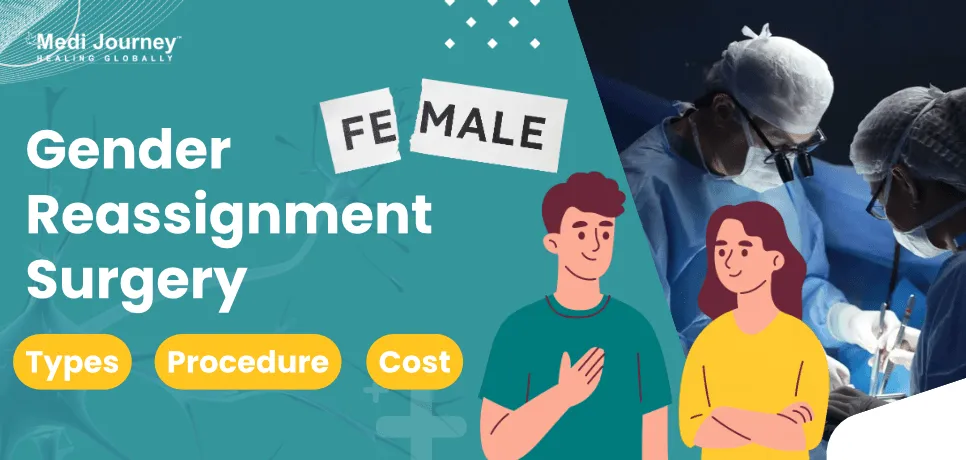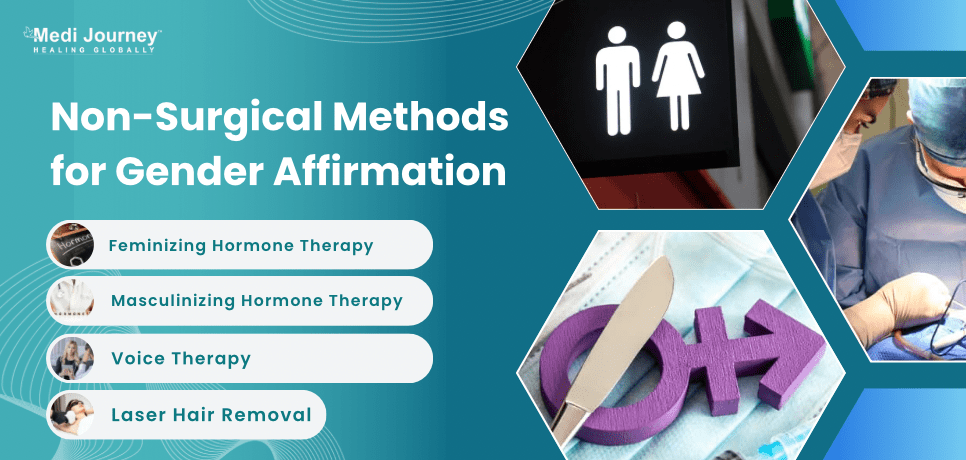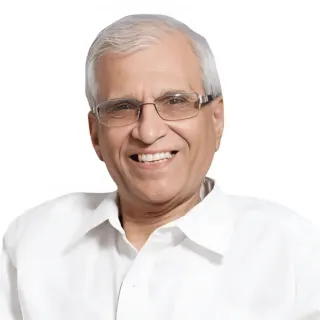Best Liver Transplant Surgeons in Artemis Hospital Gurgaon
 24 December,2025
Read More
24 December,2025
Read More
Enquire now in case of any assistance needed
 05 November,2024
05 November,2024

Gender reassignment surgery, aka gender confirmation surgery or sex reassignment surgery, is a crucial medical procedure for many transgender individuals seeking to align their physical appearance with their gender identity. This process, while complex, represents a significant step in affirming an individual's true identity. In this blog, we will delve into various aspects of gender reassignment surgery, from its history to the types of surgery available and the journey of recovery.
Fill up the form and get assured assitance within 24 hrs!
The history of gender reassignment surgery dates back to the early 20th century, although the concept of gender transition can be traced back even further in various cultures. In the early 1900s, surgeries related to gender transformation were rare and often conducted in confidentiality due to the lack of social acceptance and the limitations of medical science at the time.
One of the earliest recorded gender reassignment surgeries took place in 1930 when Danish artist Lili Elbe, originally born as Einar Wegener, underwent several experimental surgeries in Germany. Elbe's story, later popularized in the book and film The Danish Girl, marked a watershed moment in transgender history. She was the first to undergo a uterus transplant. However, due to the primitive nature of the surgeries and the lack of post-operative care, she developed organ rejection and died on 13 September 1931.
As medical science progressed through the 20th century, surgeries became safer and more sophisticated. By the 1950s and 1960s, advancements in endocrinology (the study of hormones) and surgical techniques allowed for safer and more effective procedures.
Today, gender reassignment surgery has become much more advanced and widely available, with increasing acceptance of transgender individuals across many societies. While there are still challenges, the strides made in medical and social realms have allowed many to undergo these life-changing procedures with much better outcomes.
The number of individuals undergoing gender reassignment surgery has increased over the years, reflecting the growing acceptance and understanding of transgender identities. A study from the American Society of Plastic Surgeons reported a 20% increase in gender confirmation surgeries in the United States between 2017 and 2020. This increase aligns with the broader social movement advocating for transgender rights and visibility.
Globally, thousands of individuals undergo gender reassignment surgery every year. In the USA alone, approximately 9,000 gender affirmation surgeries are performed annually. It is estimated that between 2016 and 2019, more than 48,000 individuals sought at least one of the gender-affirming surgeries. These statistics, however, only scratch the surface, as not all transgender individuals opt for surgery, and many face barriers such as cost, access to healthcare, and legal constraints.
Before diving deep into what gender affirmation surgeries are and why they are done, let's understand some basic terminologies.
Gender reassignment surgery involves surgical procedures that help an individual's physical body align with their gender identity. It includes various surgeries, depending on whether the person is transitioning from female to male (FTM) or male to female (MTF). The surgery is part of a broader process known as gender transition, which may also include hormone therapy, psychological support, and social transition.
The goal of the surgery is not only to modify sexual characteristics but also to provide relief from gender dysphoria. In this condition, an individual feels a deep discomfort with their biological sex. Gender reassignment surgery helps many transgender people achieve a greater sense of unity between their body and identity, allowing them to live a more authentic life.
Gender reassignment surgery is done for individuals experiencing gender dysphoria, a psychological condition that often leads to significant emotional distress, anxiety, and depression. For many, undergoing gender reassignment surgery is a vital part of alleviating this dysphoria and achieving mental well-being.
If you are transgender, nonbinary, or gender diverse, gender affirmation surgery may be part of your transition. This surgery can enhance or reduce physical attributes associated with being assigned female at birth (AFAB) or being assigned male at birth (AMAB), and it can also change the appearance of your genitals. The surgery allows transgender individuals to feel more comfortable in their skin and aligns their physical attributes with their gender identity.
Gender reassignment surgery is often one of the final stages of a comprehensive transition process that may include hormone therapy and social changes such as changing their name, using different pronouns (she/her, he/him, they/them), their style (hairstyle, clothing, makeup, etc.) and legal gender marker.
A gender reassignment surgery helps individuals battle various psychological conditions. Some of them are:
A person undergoing gender affirmation surgery experiences various social challenges. These include:

Not all transgender individuals opt for or require surgery. Many choose non-surgical methods as part of their transition. These methods include:
Gender reassignment surgery is broadly categorized into two types based on the direction of transition:
Multiple procedures may be performed within these categories, depending on a person's needs and desires. Some opt for only top surgery (chest surgery), while others may choose both top and bottom surgeries (genital reconstruction).
Male-to-female surgery typically involves several procedures aimed at creating a feminine appearance. These may include:
MTF surgery focuses on achieving a feminine physical appearance, including external genitalia, facial features, and body contouring.
Female-to-male surgery involves procedures aimed at creating a masculine appearance. These procedures may include:
FTM surgery focuses on achieving a masculine appearance, including chest reconstruction and genital modification.
Gender reassignment surgery is a multidisciplinary effort involving a team of doctors and other healthcare professionals working together to provide the best possible outcomes for the patient. Some key members of the team include:
This team approach ensures that the individual receives comprehensive care before, during, and after the surgery.
The specific gender affirmation surgical procedures vary depending on the type of transition. However, gender reassignment surgeries generally follow these steps:

Post-operative care is essential for recovery. Patients undergoing gender affirmation surgery will typically need to:
The recovery process for gender reassignment surgery varies based on the type and complexity of the surgery. Here's a general overview:
The recovery timeline according to the type of gender reassignment surgery performed is as follows.
As with any major surgery, there are risks associated with gender reassignment procedures. Some risks include:
Despite these risks, the benefits of gender reassignment surgery are significant for many transgender individuals. According to several researches, 94 to 100% of people undergoing gender reassignment surgeries are satisfied with the results and experience reduced gender incongruence. A few benefits associated with these surgeries are:
The cost of gender reassignment surgery varies widely across the world. Costs can depend on the healthcare system in place, the type of surgery, and whether or not insurance covers the procedures. Below is an overview of the expenses in various countries:
Turkey is known for offering the best cosmetic and plastic surgery results. The cost of gender reassignment surgery is generally low in Turkey. The average costs are as follows.
Thailand is a popular medical tourism destination, particularly for gender reassignment surgery, due to its lower costs and experienced surgeons. It is considered to be the world leader in the number of gender affirmation surgeries performed after Iran.
In India, gender reassignment surgeries are performed regularly. It is one of the most sought-after destinations for various plastic surgeries. The costs of gender reassignment surgeries in India are much lower than in other developed nations, including Thailand and Turkey.
Germany's healthcare system generally covers most gender reassignment surgeries if deemed medically necessary.
In the US, gender reassignment surgery can be expensive, especially when the insurance does not cover it:
While some insurance policies in the US cover gender reassignment surgery, not all do. People looking for gender reassignment surgery need to check with their insurance provider and verify coverage options.
In the UK, gender affirmation surgery is available through the National Health Service (NHS). However, long waiting times may lead some to seek private healthcare options.
Gender reassignment surgery is a vital step for many transgender individuals seeking to align their physical appearance with their gender identity. With a rich history and continued advancements in medical science, the surgery offers life-changing benefits for those experiencing gender dysphoria. While it is a complex procedure that requires careful consideration and skilled medical teams, the result is often a newfound sense of authenticity, comfort, and happiness.
Fill up the form and get assured assitance within 24 hrs!
Doctor of Pharmacy
Dr. Deepanshu Siwach is a skilled clinical pharmacist with a Doctor of Pharmacy degree.?He has 4+?years of experience and has worked with thousands of patients. He has been associated with some of the top hospitals, such as Artemis Gurgaon.
Dr. Nilesh Satbhai is an internationally trained Cosmetic, Plastic, and Reconstructive Surgeon with over 24 years of experience. He has served more than 1,000 patients and performed 600+ complex surgeries. His expertise lies in hand transplant, brachial plexus surgery, compression neuropathy treatment, nerve repair, replantation of amputated digits, facial palsy repair, diabetic foot treatment, and complex wound management....
Senior Consultant
Medical Oncologist
Nanavati Super Specialty Hospital, Mumbai
WhatsApp UsSenior Director
Gynecologist and Obstetrician, IVF Specialist
Max Super Speciality Hospital, Shalimar Bagh, New Delhi
WhatsApp UsSenior Director
Gynecologist and Obstetrician, IVF Specialist
Max Smart Super Speciality Hospital, Saket, New Delhi
WhatsApp UsSenior Director
Gynecologist and Obstetrician
Max Smart Super Speciality Hospital, Saket, New Delhi
WhatsApp UsSenior Director
Gynecologist and Obstetrician
Max Smart Super Speciality Hospital, Saket, New Delhi
WhatsApp UsSenior Director
Gynecologist and Obstetrician
Max Smart Super Speciality Hospital, Saket, New Delhi
WhatsApp UsThe Art of Effective Communication
 24 December,2025
Read More
24 December,2025
Read More
 23 December,2025
Read More
23 December,2025
Read More
 17 December,2025
Read More
17 December,2025
Read More
 16 December,2025
Read More
16 December,2025
Read More
 10 December,2025
Read More
10 December,2025
Read More
 09 December,2025
Read More
09 December,2025
Read More
Trusted by Patients
"I am Asim from Bangladesh and was looking for treatment in India for neuro. I visited many websites to get the complete information regarding the treatment but I was not satisfied as I was getting confused. In the meanwhile, one of my friends suggested I seek help from Medi Journey as he experienced his medical journey very smoothly and was satisfied with it. They have filtered the top 10 doctors as per experience, the success rate of surgery & profile, so it helps us to choose the best treatment in India. "
"For my knee surgery, Medi Journey guided me to BLK Hospital where I received exceptional care. The team's support and the expertise at BLK Hospital exceeded my expectations. Thank you Medi Journey for making my medical journey stress-free. "
"I came from Iraq for my granddaughter's eye surgery in India facilitated by Medi Journey, due to critical cases they advised us to get a second opinion from the different hospitals before going to surgery. Finally, we went to Fortis Escort Hospital, which helped us to get more confidence for diagnosis. Fortis Escort Hospital has the best eye surgeon team with the latest instruments. Thanks to all team members for providing a high-quality treatment in India at an affordable cost. "
"I came for my hair transplant in India, before coming I was so confused about choosing the best clinic and surgeon for me. But thanks to God one of my friends had a hair transplant in India through Medi Journey. He recommended me to go with them. I am completely happy with my experience with them. They were always very fast in their responses to me. the success rate of my hair transplant surgery is 100%."
"Artemis Hospital, suggested by Medi Journey, turned out to be a great choice for my treatment. The personalized assistance and medical care were exceptional. I'm grateful to Medi Journey for guiding me to a hospital that perfectly matched my needs. Highly recommended! "
"I came from Afghanistan for my treatment in India at Jaypee Hospital, Noida. I had a fantastic experience with Medi Journey. Kudos to them for their incredible support during my medical journey. They not only took care of all the logistics but also connected me with a fantastic healthcare team. Efficient, caring, and highly recommended for a hassle-free medical tourism experience."
"I am Adam from Kano, Nigeria, one of my friends from Nigeria was facilitated by Medi Journey, and he recommended us to go with them. I sent my all reports to them and within 48 hours they reverted with 4 options from different hospitals. They helped me to get a Visa letter from the hospital, arrange pick-up from the airport, and book a hotel for me. Their team is very honest and throughout our stay in India they are with us they are caring for us like his family members. BLK Hospital is the best hospital in India with a top surgical oncologist surgeon team, a very advanced OT, and a Radiotherapy department. I wish more success to Medi Journey. "
"Great experience at the Max Hospital for my spine surgery and was successfully done. I thank my neurosurgeon and his entire team. I recommended all of my country's people to Medi Journey for treatment in India, they choose the best hospital, the best doctors, and the best cost for patients."
"I came to India from Dhaka, Bangladesh for my father-in-law's cardiac surgery at Fortis Hospital. I was confused about choosing the best surgeon for him before coming, but their team helped me to choose the best hospital and best cardiac surgeon in India with very good cost and 100% success rate of surgery. I am very happy with the services, really they make my journey so comfortable that make me feel at home. Thanks again and I like people to choose "Medi Journey" as your travel guide. "
"I am Mohammad from Bangladesh came to India for my general health checkup. Medi Journey offers me the complete package including Pick-up from the airport, hotel services, and 24-hour assistance. They guide you to choose the best hospital in India, the best cost of treatment with top-most doctors and give you complete information about hotel booking, and pick-up from the airport before coming to India They have the best team to help. Always choose Medi Journey for your treatment in India."





